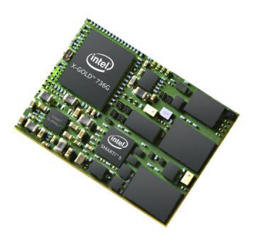The Real Reasons The iPhone 7 Ended Up With An Intel Chip Inside
In the fine print of the iPhone 7 documentation is the detail that the AT&T and T-Mobile versions of the new device won’t work on Sprint’s and Verizon’s CDMA cell networks.
Why? For a long time iPhones were one-size-fits-all-networks phones, but the iPhone 7 and iPhone 7 Plus each come in two different versions (or SKUs, in industry-speak), one with an Intel modem chip inside and one with a Qualcomm modem. The Intel 7630 modem doesn’t work with Sprint’s and Verizon’s 3G CDMA networks, so all Sprint and Verizon customers will get an iPhone 7 with a Qualcomm chip inside. For everyone else, the iPhone 7 could have either an Intel or a Qualcomm modem.
It’s thought that Qualcomm will end up supplying the modems for 60% to 70% of the iPhone 7s, a source with knowledge of the business tells me, but that depends on sales geographically and how well Intel delivers its share of the modems.
Dual-Sourcing
Having more than one iPhone SKU complicates things a bit for Apple, it has good reason for doing it.
Dual-sourcing the modems in the iPhone 7 also give Apple the leverage it likes over its suppliers. That applies not only to component prices but also to timeframes, quantity numbers, and the level of customization of the produce being delivered.
But there’s way more to it.
Managing Network Complexity
Apple created another SKU of the iPhone 7 because the RF (radio frequency) technology it was having to stuff into a single SKU to accommodate the growing number of wireless carriers around the world, and the level of complexity in their networks, was becoming unmanageable. For example, carriers increasingly combine two distinct spectrum bands to increase broadband capacity (carrier aggregation).
As the number and complexity of networks grow, Apple has to add more radio hardware (like amplifiers, filters, and switches) to the iPhone to accommodate it all. That adds cost to each phone, which cuts into margin. Samsung, by comparison, uses five SKUs for its Galaxy S7.
Intel/Apple Past And Future
There are other reasons for the additional SKU, and some of it very likely has to do with Apple’s current and future relationship with Intel.

The Intel 7360 modem in the iPhone 7 was originally developed by Infinion (which Intel bought) and was fabricated by Taiwan Semiconductor Manufacturing Company, Limited (TSMC).
In the first few years of the iPhone, when AT&T had an exclusive on the device, Infinion supplied modems for the phone. This was fine, because Infinion’s modem didn’t need to support CDMA networks, only AT&T’s GSM network. After Verizon finally got the phone in early 2011, Apple decided it wanted to support only one modem, so it defaulted to the Qualcomm modem that supported both network flavors.
Fabrication
Today Intel has its own growing fabrication business that might one day bake modem chips that go inside iPhones. Intel’s next generation modem, the 7460, will very likely be fabricated at Intel using the company’s 14nm process. That’s likely to help create a smaller and more efficient modem for the iPhone.
Long, long ago in a Valley not so far away, Intel famously, and tragically, underestimated the future of mobile, and so ceded almost all of the mobile chip business to rival Qualcomm.
Intel has been working with Apple for the past few years to guide the development of the 7360. By October 2015 Intel had at least a 1,000 people working on this failure-not-an-option project. In fact, Intel, my source said, is willing to put as many people to work on the Apple project as it takes to keep the whole thing afloat and meeting deadlines.
The end game for Apple may be to work with Intel to co-design a future system on a chip (SoC) that includes the modem, Apple Ax CPU, GPU, and many other components on one chip. This unified design can reduce the space the chips take up inside the phone, reduce the heat they emit, and reduce the power they require. The whole thing may be fabricated at Intel fabrication facilities.
Apple’s goal is to spend less money on things like modems that are invisible to customers, and more money on things like the display that users are constantly aware of. That’s why in the iPhone you’ll very likely see Apple move to an OLED display, our source said, which are about twice as expensive as the displays used in iPhones today. Apple must make up that cost by saving money somewhere else in the design in order to keep its margin intact.
As for the financial terms of the arrangement, Intel is now negotiating from a position of weakness, great as its need to get in the mobile game. But the whole thing could end up benefiting both tech companies greatly. Apple may be able to better control modem price and quality, and increase its leverage with Qualcomm. For Intel, a big design win with the most popular phone on earth is a pretty nice way to make a dramatic re-entrance in the mobile chip business.
Fast Company , Read Full Story
(67)













